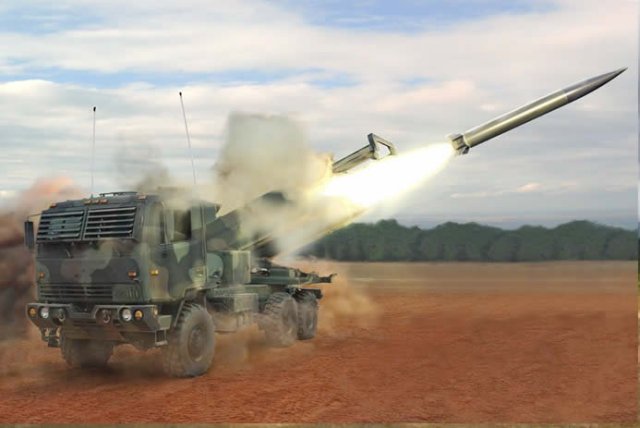Breaking news
Raytheon to offer new missile design for US Army's Long-Range Precision Fires requirement 21703161.
| a | |||
|
|
|||
|
Defence & Security Industry News - Raytheon
|
|||
|
|
|||
|
Raytheon to offer new missile design for US Army's Long-Range Precision Fires requirement
|
|||
|
The US-based defense giant Raytheon Company will offer a new missile design to meet the U.S. Army's Long-Range Precision Fires (LRPF) requirement to replace current army tactical missile system weapons, the company announced on March 16, 2016.
|
|||
|
|
|||
 Raytheon’s new Long-Range Precision Fires missile is deployed from a mobile launcher in this artist’s rendering Raytheon’s new Long-Range Precision Fires missile is deployed from a mobile launcher in this artist’s rendering(Credit: Raytheon Co.) |
|||
|
|
|||
|
"Our LRPF design will provide the U.S. Army with double the combat power of its ground launchers by utilizing a new design that fits two missiles in a single launcher pod -- increasing effectiveness at a fraction of the cost of the current weapon," said Dr. Thomas Bussing, Raytheon vice president of Advanced Missile Systems.
"Advances in propulsion will enable LRPF to fly faster over longer distances -- approximately 500 kilometers -- to defeat fixed land targets. This is the definition of overmatch against future threats," Bussing added. Raytheon will design LRPF to integrate with the M270 MLRS and M142 HIMARS rocket launchers. The new missile's range and speed will provide U.S. Army combat units to engage targets over vast geographic space in a high-threat environment. “We're looking to replace a design originally from the 1980s," said Greg Haynes, a Raytheon manager leading the company’s campaign for a new long-range weapon. “Missile technology has come a long way.” The ability to fit two Long-Range Precision Fires missiles in an existing launcher is a significant leap over existing tactical missiles. “Since most of these were produced in the late '90s, you run into what we call ‘end of shelf life,’ where the motors and such are no longer reliable,” said former Army colonel John Weinzettle, now a program manager in Raytheon’s Advanced Missile Systems business. An upgrade becomes even more urgent considering how quickly threats are evolving around the world. “Adversaries are already equipped with long-range weapons that could inflict substantial damage at distances beyond the Army’s striking power,” Weinzettle said. Raytheon’s new long-range weapon will engage targets at approximately 500 kilometers. LRPF is primarily meant to attack fixed ground locations, like helicopter staging areas or hardened bunkers. Because current missiles have restrictions in size, payload effectiveness and range, a simple life-extension program cannot address long-term threats. Marine infantry veteran Allen Horman, now a business development manager in Raytheon Advanced Missile Systems, explained that life extension doesn’t add any more capability to the existing inventory. “You are still stuck with the larger round and you still have single loadouts,” Horman said. “So the cost to go to a new missile and a new program to double the loadout is significantly cheaper than what people traditionally say about new starts.” Despite being a surface-to-surface weapon, LRPF draws innovation from other Raytheon programs. “It is very similar to a lot of the missile designs we’ve done in the shipboard and the air defense roles,” Weinzettle said, citing Standard Missile-3 and Standard Missile-6 as examples. “We are bringing technology from both of those programs to bear on LRPF.” Drawing from experience in missile defense and precision weapons, Raytheon has developed a missile that is capable and cost-effective. “One system can fire twice as many missiles, twice as fast, and it’s much cheaper because it uses one launcher with two missiles,” Horman said. |
|||


























